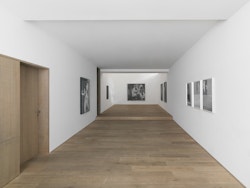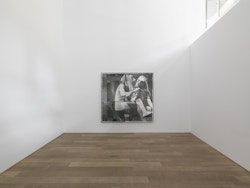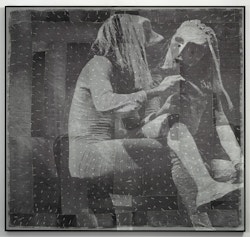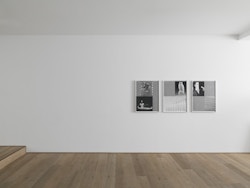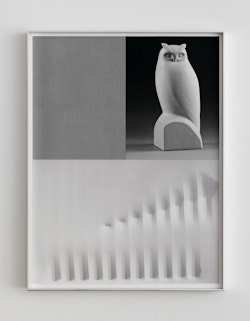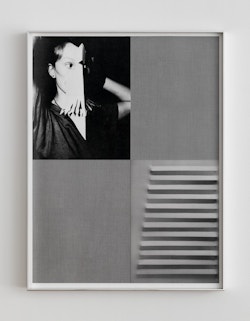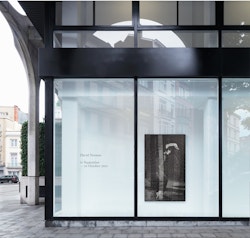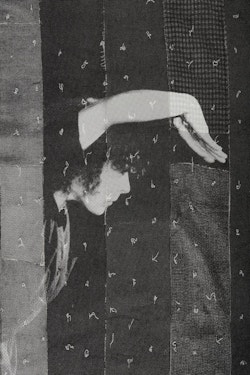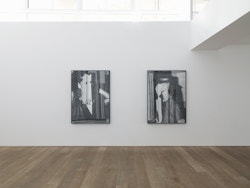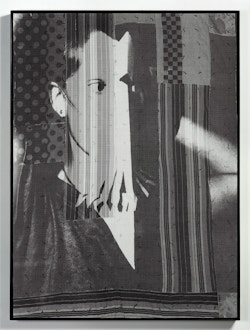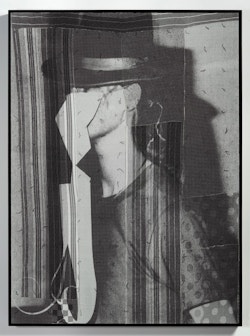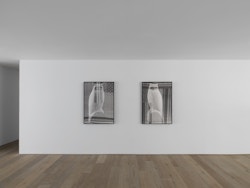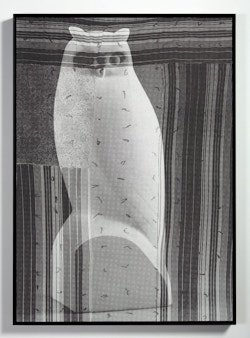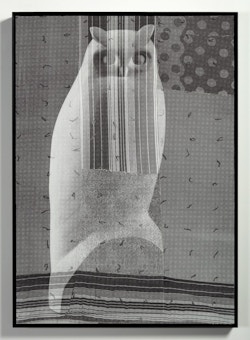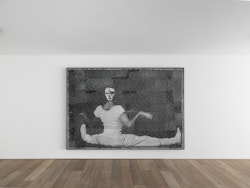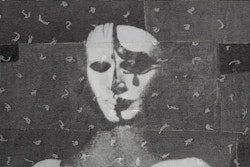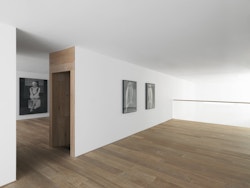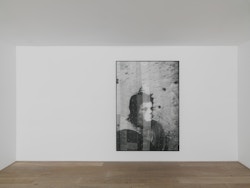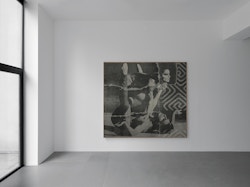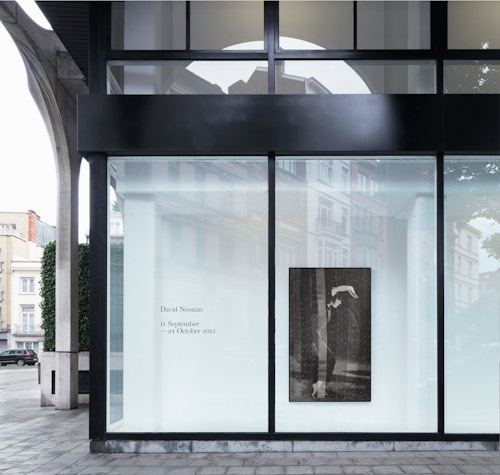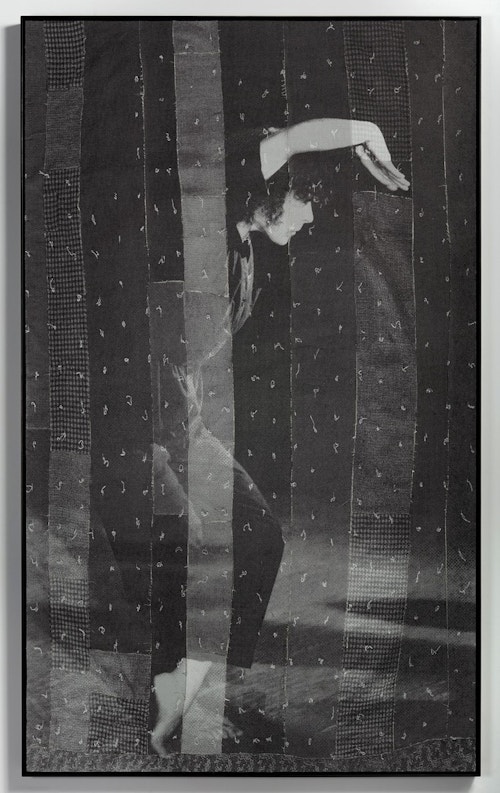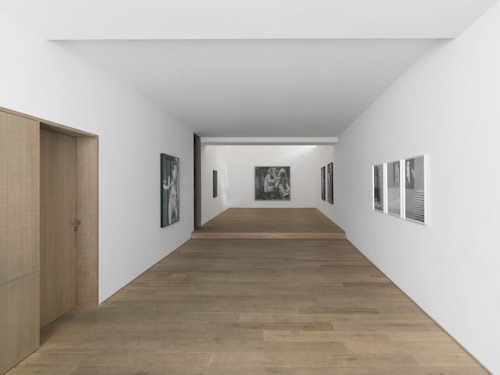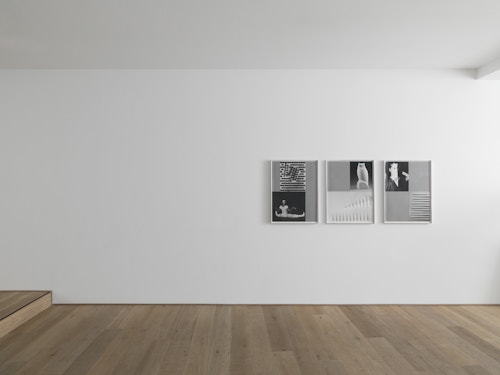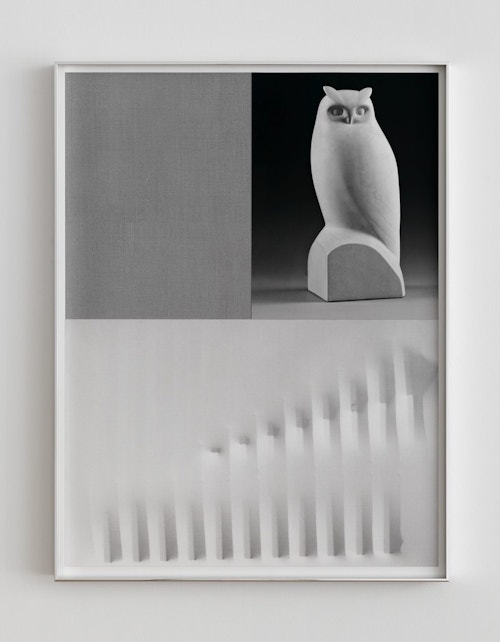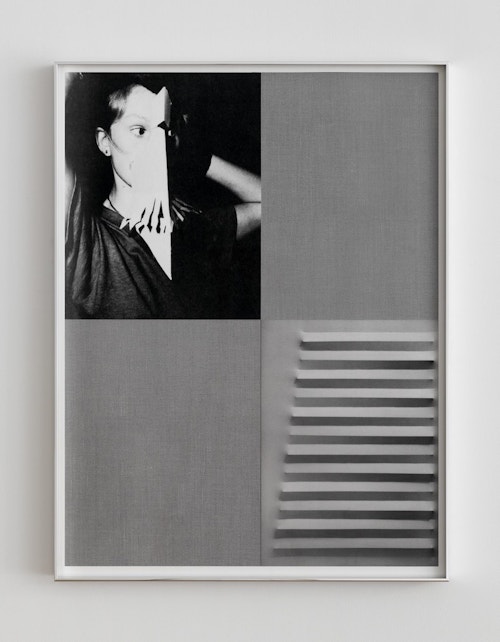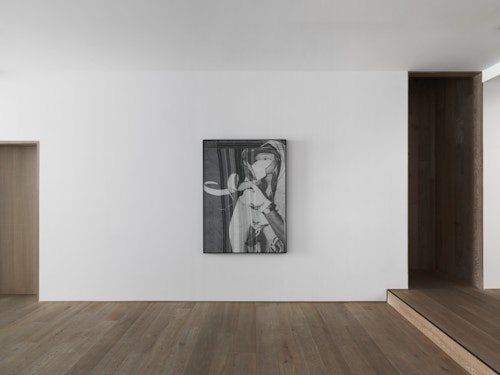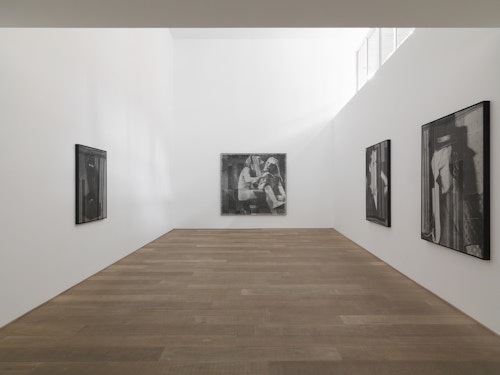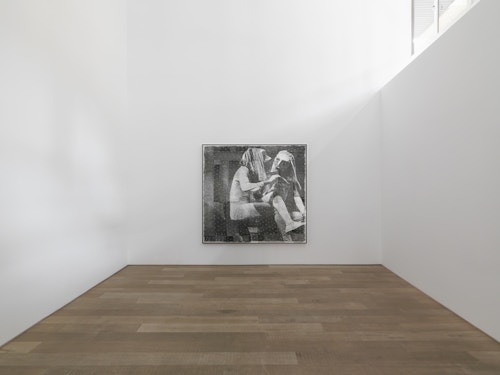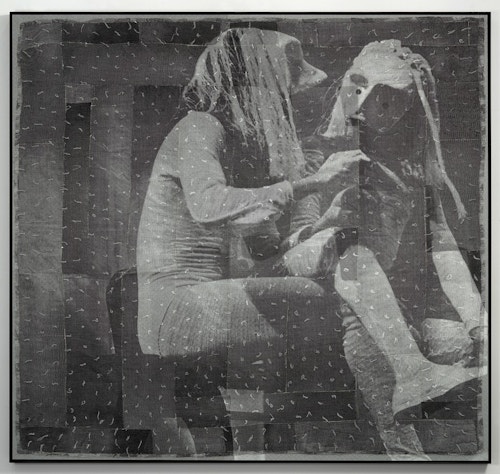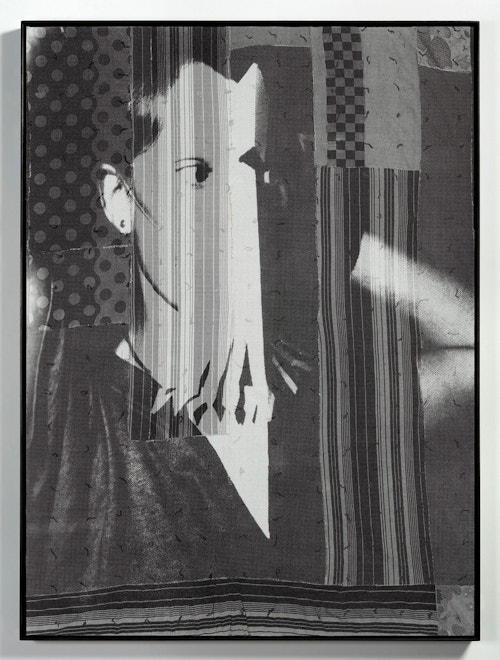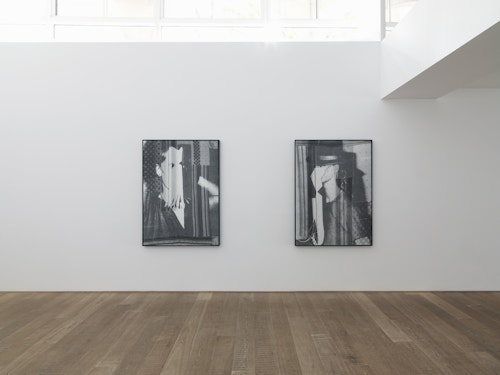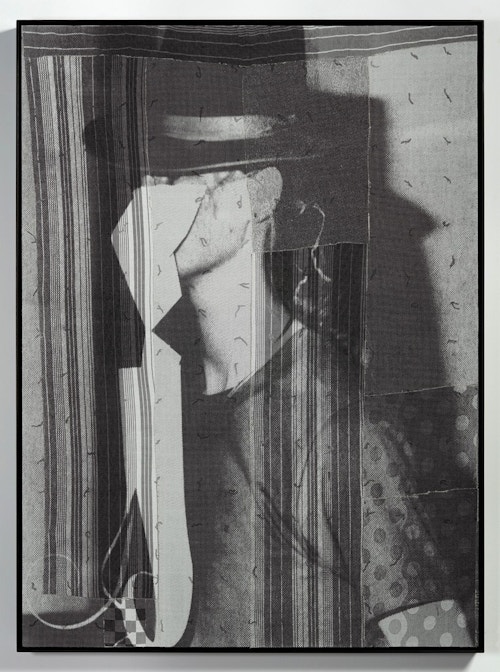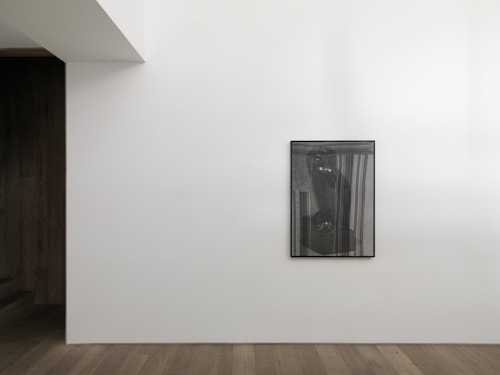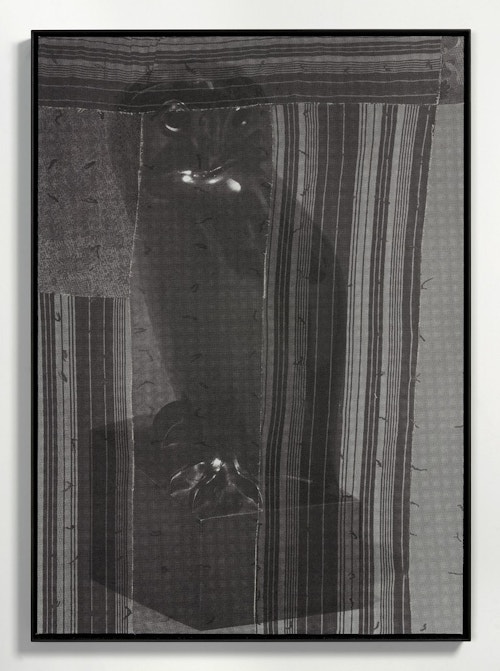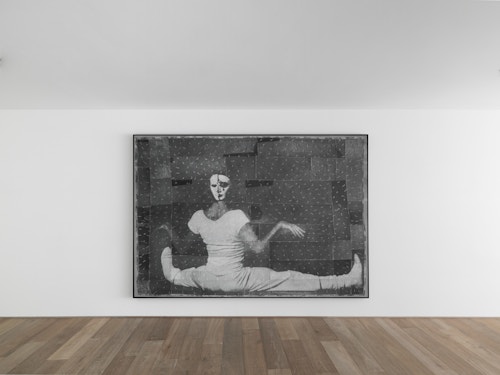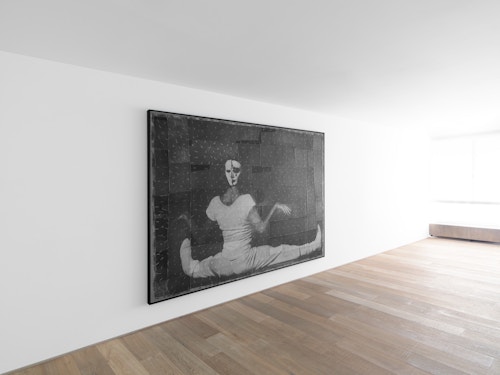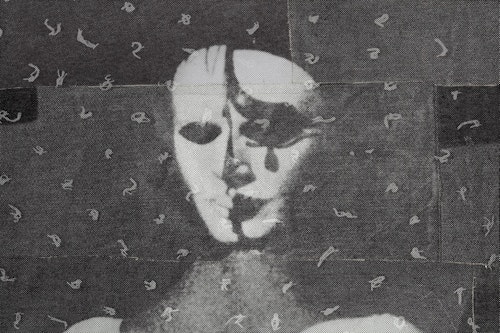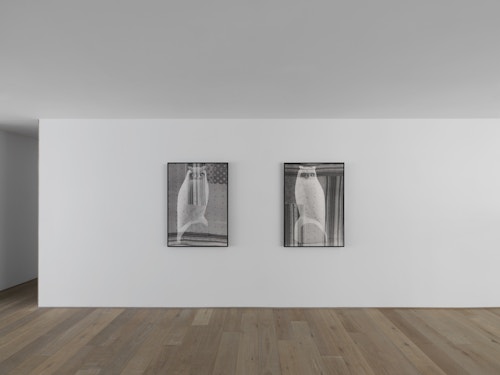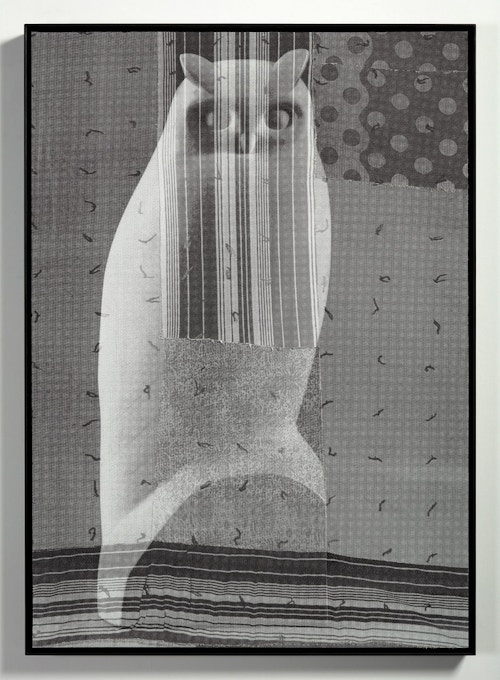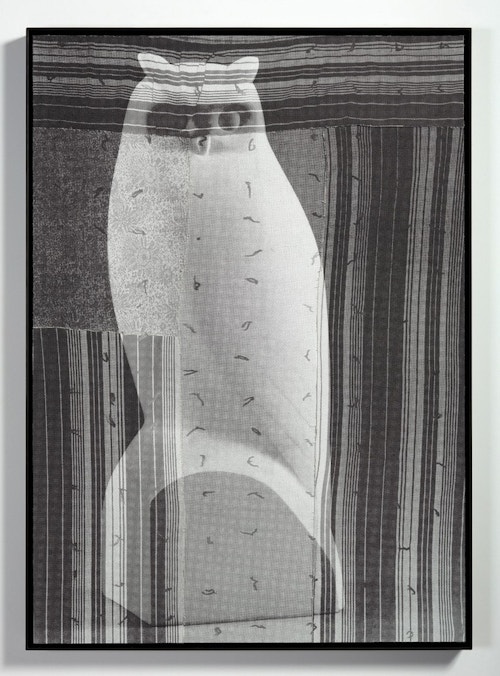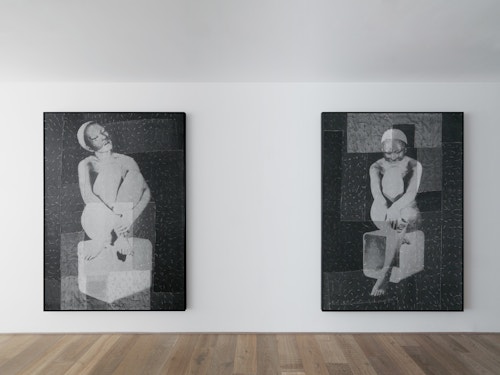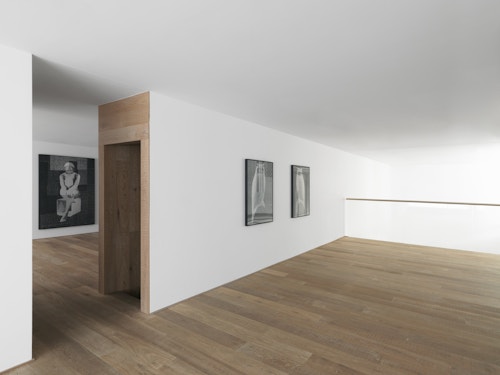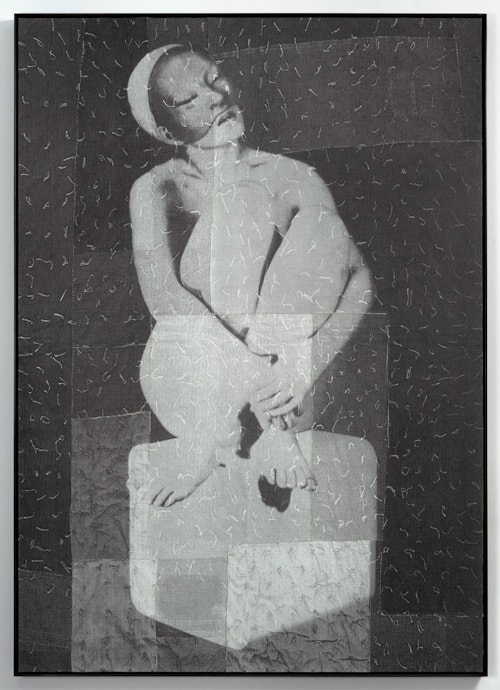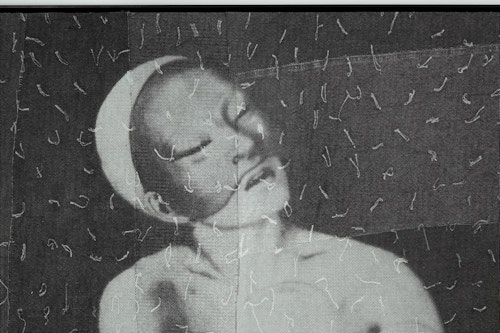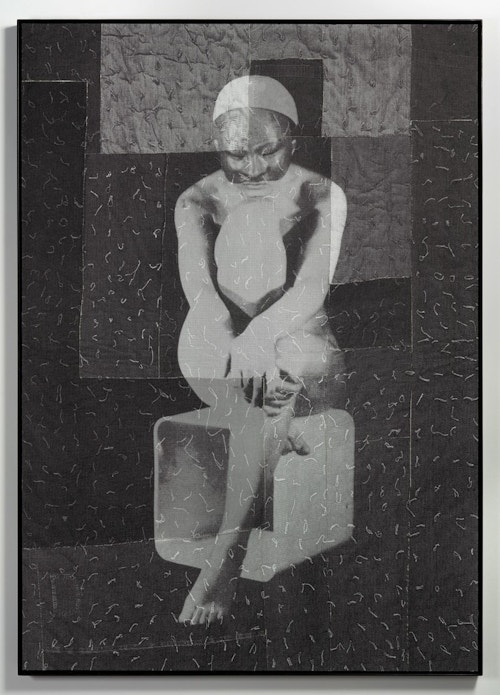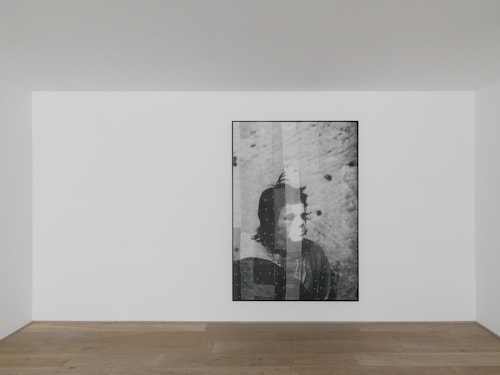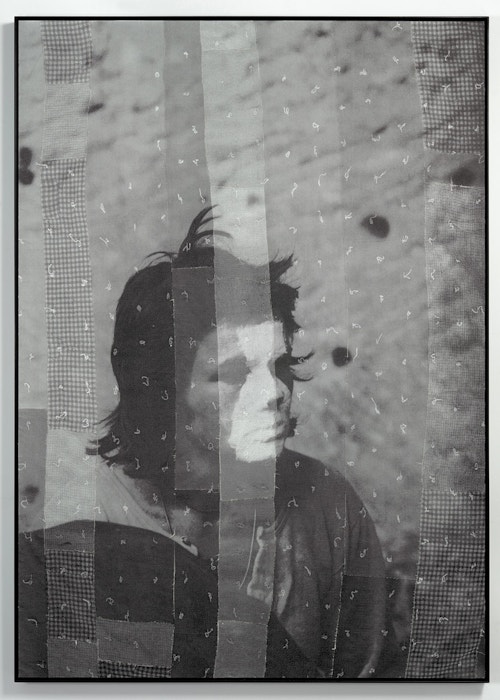
David Noonan
Xavier Hufkens is pleased to announce an exhibition of new work by
David Noonan.
Since he moved to London from his native Australia in 2005, David Noonan has been working on large-scale, screen-printed linen collages. Co-existing alongside his sculptural and film works, they combine figurative imagery with abstract motifs borrowed from antique textiles, and are inspired by his extensive and ever-expanding archive of visual material – an eclectic repository of books, photographs and magazines that he has built up over several decades. Noonan’s associative compositions often trigger a sense of melancholy and mystery. On one level, this is related to the artist’s preference for a monochrome palette and his use of largely historical imagery. On another, subliminal level, it emanates from the enigmatic contrasts and juxtapositions within the works themselves, and through the visual dialogues that are established when viewed as an installation.
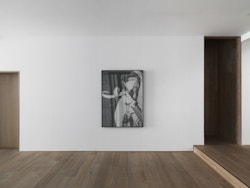
Noonan’s latest works mark an aesthetic and technical departure for the artist. Like his earlier works, each screen-print conflates two distinct visual layers: found images of figures or animals, inevitably gleaned from publications, and self-generated photographs of vintage textiles, many of which also belong to the artist. In Noonan’s hands, these two contrasting types of photograph – the found and the authored – dissolve into a single, indivisible image. What sets these new works apart, however, is their graphic intensity and unprecedented tonal range – the result of a technical advance on the part of the artist. By staining the raw linen with a thin layer of warm grey pigment, Noonan was able to capture and print a greater tonal range. The thin layer of pigment still allowed the artist to tear the fabric leaving a natural raw edge to the linen, an important element to activating the picture’s surface. In keeping with the cool shift in pallet, the artist has also opted for minimal black steel frames. These frames are not painted and maintain an element of their natural patina.
While viewers well known with Noonan’s oeuvre will recognise familiar imagery (owls, theatrical situations, masks), the mood is different. Rather than collate multiple images from different sources, the artist has chosen to isolate single figures within indeterminate spaces. The overall effect is eerily still and sculptural. Similarly, the Japanese textiles that Noonan once favoured have been replaced by irregular patchworks of traditional European and American fabrics – ticking, indigo and gingham, as well as occasional floral and geometric prints – all of which have been hand-stitched into quilts, or quilt-like formations. The utilitarian fabrics and their haphazard assembly point to thrift and the careful preservation of scarce resources. Yet the luminosity of the randomly scattered tufted stiches add a rich complexity to the visual field. Although the works are ultimately flat and two-dimensional, the heightened contrasts and detailed textural rendering creates an obvious trompe l’oeil effect. An element common to all pictures in this exhibition is what appears to be thread tufts or tassels that are sewn in the quilts that Noonan uses, these appear to dance on the surface of the pictures almost like Memphis patterns creating a stark but shallow depth.
At the heart of Noonan’s oeuvre lies a poetic sensibility towards atmosphere and mood. As Noonan himself has said: ‘I’m trying to touch on a certain atmosphere or tone… when you’re listening to music, particular songs or artists will have a particular atmosphere to their work. That’s what I’m trying to achieve with pictures, to give the piece an ambience that you can’t exactly pin down, but that sets a certain tone. I like to think of them as these little hermetic things that have a certain energy or atmosphere that can wash over you, affecting your mood. I don’t want to spell something out; my pieces are more about evoking something in a viewer.’
David Noonan (b. 1969, Ballarat, Australia) lives and works in London. Recent solo exhibitions include the Contemporary Art Museum, St. Louis, Missouri, USA (2011), the Australian Centre for Contemporary Art, Melbourne (2009), the Chisenhale Gallery, London (2008) and the Palais de Tokyo, Paris (2007). In 2009, his work was included in the group show Altermodern, as part of the Tate Triennial, Tate Britain, London (2009). JRP/Ringier published two publications, a monograph (2012) and Scenes, an artist book in 2009.

